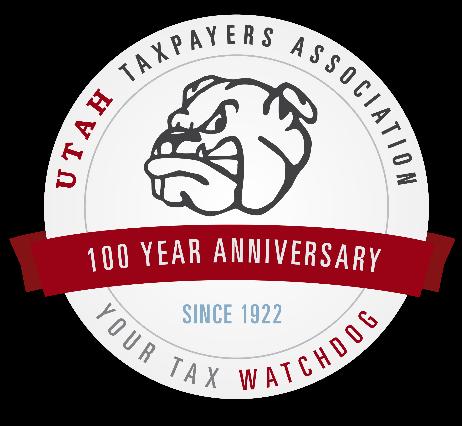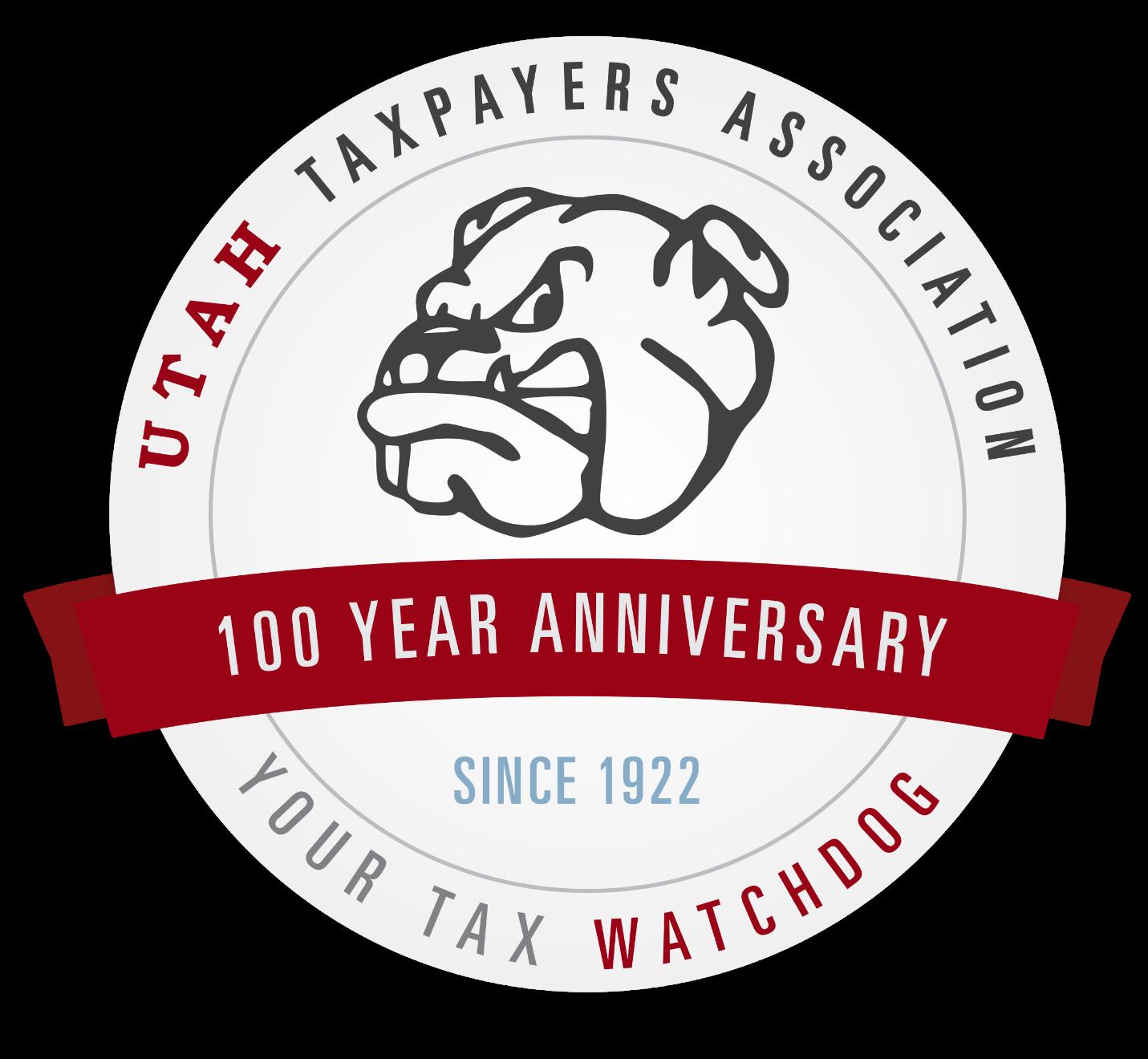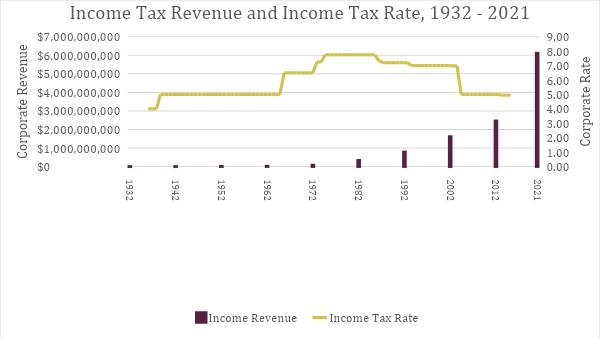2022 FAST TAX
CENTENNIAL EDITION



A report from the Utah Taxpayers Association












In celebration of the 100 year anniversary of the Utah Taxpayers Association, this Fast Tax reference booklet has been updated to provide a more in-depth examination on the history of major taxes levied in Utah.
This reference summarizes major Utah state and local taxes, and is updated to include Fiscal Year 2021 revenues, as provided by state agencies.
In this special edition of Fast Tax, the Association provides a detailed history of eight important taxes levied by the state. This history includes enactments, rate changes, yields of the tax from its inception, as well as other vital pieces of information taxpayers can use when discussing tax policy.
The Utah Taxpayers Association would like to thank the staff of the Utah State Tax Commission and the Office of Legislative Research and General Counsel for their cooperation in providing information contained in this reference.
The Association would like to thank the sponsor of this special edition of Fast Tax:

This special edition of Fast Tax is graciously sponsored by Holland and Hart
For more than 25 years, Holland & Hart has been a driving force in the Utah business community with a full-service office of more than 80 lawyers. Set against the backdrop of the Wasatch mountains and in earshot of emerging technology companies along Silicon Slopes, our Utah lawyers advise clients on a range of complex legal issues, including state and local taxes; emerging growth and venture capital; real estate and construction; energy and resources; and environmental law
We offer clients a wealth of local experience, backed by a firmwide network of resources, including 450 attorneys across eight states and in Washington, D.C.
Statute: 59-10-101 – 1405

Following action taken during the 2022 General Session, the rate for the individual income tax was reduced from 4.95% to its current rate of 4.85%. That rate has been in effect since January 1, 2022.
The Utah Taxpayers Association continues to advocate for a lower individual income tax rate.
Whenever the state experiences large surpluses, Utah taxpayers deserve income tax relief History has shown that lower income tax rates drive increases in government revenues through economic growth Policymakers should always be focused on lowering income tax rates

Utah enacted its individual income tax in 1931, creating nine separate income tax brackets. This first implementation had a rate ranging from 1% ($0 1000) up to 4% for the 9th and highest bracket ($8,000+). The income tax levy was a direct response to the Great Depression.
The rates and income brackets varied throughout the years, reaching a peak rate of 7.75% levied for the highest income brackets.
Significant changes were made to the income tax beginning in 2006, when the Legislature reduced taxes for nearly all residents through changes to the income brackets, including the brackets to be adjusted for inflation. The bill, SB 4001 (2006), also created an option to pay a flat rate of 5.35%.
Beginning in 2008, the brackets were eliminated altogether and the state moved to a flat rate of 5%. This new flat rate was reduced to 4.95% beginning in 2018 and again to 4.85% in 2022.

Utah allows for an income tax exemption based on the number of qualifying dependents a filer has. The amount was increased from $565 per dependent
to $1,750 in 2021. This change provided an income tax cut of $54 million to taxpayers with dependents.
This amount is still below the amount that Utahns used to be able to claim following the elimination of the federal dependent exemption in the Tax Cuts and Jobs Act (2017).
Up until 2021, the revenue was constitutionally restricted to only be used for the education system. Following a constitutional amendment passed in 2020, the revenue may now be used “to support children and to support individuals with a disability ” (Article XIII Section 5).
1932 $ 248,734
1942 $ 1,277,121 1952 $ 7,324,063
1962 $ 18,944,967
1972 $ 74,096,483 1982 $ 331,139,396 1992 $ 784,430,264
2002 $ 1,610,598,033 2012 $ 2,459,432,168 2021 $ 6,110,511,295

Statute: 59-7-101 – 903; 59-1-401 – 405

Following action taken during the 2022 General Session, the rate for the corporate income tax was reduced from 4.95% to its current rate of 4.85%.
That rate has been in effect since January 1, 2022.
The Utah Taxpayers Association continues to advocate for reducing the tax burden on businesses and ensuring government revenues are less volatile
Tax relief for businesses, both small and large, is vital to keeping Utah’s families sustainable and driving our economic engine forward.

Utah began collecting its corporate tax revenue in 1931 and imposed a franchise tax on state banks and other corporations and certain businesses, with a minimum tax. The rate was set at 3% at that time. However, the tax was not broadened to capture more businesses until 1966, with the passage of HB 68 which raised the rate to 6%. The rate was reduced to 4% in 1977, and in 1984, was raised to 5% where it remained until a decrease of 0.05% in 2018. The rate was also decreased in 2022, when it dropped to its current rate of 4.85%.
Corporate income tax for most multi state firms is now calculated using a single sales factor (SSF).
Under the SSF method, companies are now encouraged to expand or locate to Utah, because their property and payroll are not part of the formula in determining their Utah corporate income tax. A few industries were given the option to choose a SSF or the traditional property, payroll and sales factor so the move to a SSF did not result in a tax increase on these entities.
The corporate income tax is one of the state’s most volatile revenue sources. For example, from FY 2020 to FY 2021, the net revenue from this tax increased by more 108%.
That may seem like a positive trait , however it can also drop in wide swings as well, and that makes it very difficult for policymakers to rely on that revenue when it comes to spending decisions and can lead to overall fiscal instability.
Up until 2021, the revenue was constitutionally required to be used for the sole purpose of education. Following a constitutional amendment passed in 2020, the revenue may now be used “to support children and to support individuals with a disability ” (Article XIII Section 5).
In this case, since the money is virtually all given to these constitutionally allowable purposes, there are very few direct programs that are funded by the corporate income tax. This reduces the impact of the volatility of this tax a bit , however policymakers need to resist the urge to rely on this revenue stream. Doing that and tying specific programs to volatile revenue sources, such as the corporate income tax, may lead to excess and possible wasteful spending in revenue positive years, and substantial cuts to services in downturns
1932 $ 112,363 1942 $ 1,290,625 1952 $ 3,085,126 1962 $ 7,444,728
1972 $ 12,691,054
1982 $ 40,894,065 1992 $ 80,944,378 2002 $ 118,920,279
2012 $ 268,893,788 2021 $ 742,697,439
Statute: 59-13-101 – 202

Utah’s rate is based on prior years ’ prices. Future increases are linked to the statewide average rack price based upon where the average rack price for the fiscal year ends.
infrastructure, models must be created to ensure all drivers are paying for their usage of the roads. The Road Usage Charge (RUC) is an appropriate

measure to keep our roadways flowing.
Motor fuel sold, used, or received for sales in the state is taxed. The motor fuel tax was enacted in 1923, with a rate of 2.5 cents to a gallon. The next increase was to $0.035 per gallon in 1925, and another $0.005 in 1931. The Legislature did then not raise it again for 20 years. There were another 8 increases between then at 1998, followed by another 18 year gap before reaching 29.4 cents per gallon in 2016.
Rather than taking action every few years to increase the gas tax, the Legislature opted to make an automatic adjustment to determine the amount of tax paid. In 2015, along with raising the gas tax 5 cents, the Legislature has the Tax Commission automatically determine the statewide average rack price of a gallon of gas. These calculations to determine the tax rate is based on the previous average rack price per gallon and the consumer price index. In years of high inflation, the amount paid in the statewide gas tax may increase substantially.
Motor fuel taxes are plateauing as vehicles become more fuel efficient and as more alternate fueled vehicles enter the market . Since virtually all revenue from the motor fuel tax goes into maintaining existing transportation
As seen in the chart above, while the taxable gallons sold in a given year continue to grow, the growth rate is slowing. With the slowing growth rate,

yet an increase in taxable gallons, funding for the maintenance and operation of Utah’s roadways has become a challenge.
More than $600 million in sales taxes already go to transportation infrastructure, and that number could increase as vehicles become more fuel efficient and with the growth of alternate fueled vehicles.
Utah has enacted a Road Usage Charge (RUC) to try and address this problem. The RUC program essentially calculates the amount of miles driven in the state of Utah and assigns a fee per mile. Right now, the program is only available to alternate-fueled vehicles, which means they are likely not paying any kind of gas tax. But the program will be broadened and is expected to be fully implemented within the next decade.
All revenue from this tax is deposited daily into the Transportation Fund, except for some money being given to the Tax Commission for administrative purposes.
Year Tax Collections 1923 $ 85,060 1933 $ 2,110,681 1943 $ 4,143,479 1953 $ 11,589,369 1963 $ 20,666,924 1973 $ 41,124,133 1983 $ 68,697,076 1993 $ 141,306,148 2003 $ 236,639,144 2013 $ 256,867,039 2021 $ 379,507,149
Statute: 59-12-101 – 59-12-2220

RATE: 4.85%
The statewide sales tax is the primary funding source for all of Utah’s government spending (except for public and higher education), such as social services and government operations. The sales tax also funds things like water infrastructure and transportation, through the usage of earmarks.

While Utah has taken many steps to eliminate double taxation and tax pyramiding, there are still instances of businesses and consumers paying double taxation on many products, such as oil and gas. The Utah Taxpayers
Association is actively working to eliminate all double taxation and tax pyramiding in the state.
Prior to the Great Depression, Utah’s governments were funded almost exclusively by the property tax. In 1933, the state issued its first sales tax, which was only supposed to be temporary. The initial rate was set at 0.75%. Later that year, the Legislature increased it to 2% and made it permanent . Increases continued from the 1960s onward, until a peak general sales tax rate of 5.070% was reached in 1990. In 2009, the rate was set to 4.7%. Following a voter approved increase for Medicaid expansion, the state rate is now set at 4.85%.
Earmarks, generally, remained out of the sales tax revenue until 1990, when 1/64th of 1% was earmarked to the Olympic Special Revenue Fund. This earmark ended in 1999, however, earmarks have continued to grow and have taken a larger and larger portion of the state sales tax. In FY 2021, earmarks accounted for $929 million of the total sales and use tax revenues, which is approximately 26% of total revenue.

Prior to 2007, unprepared food had been taxed at the higher general sales tax rate. In 2007, the statewide rate on unprepared food went to 2.75%, while the statewide rate remained at 4.75%. In 2009, the unprepared food tax
dropped to its current rate of 1.75%, where it remains today. Keep in mind, that is only the state rate. Local sales taxes still apply, bringing the total grocery tax rate to 3%.
There have been discussions over the years on whether to remove the sales tax on unprepared food entirely, with proposals even as recent as December of 2021. Then, Governor Spencer Cox recommended, as part of his FY 2023 budget , that a refundable income tax credit be used to offset the cost of sales tax on food.
Reducing or eliminating the sales tax on food is economically unstable and poor tax policy, since those are purchases made regardless of an economic cycle. During an economic downturn, other purchases may be sacrificed in order to save money. This in turn means less sales tax revenue, which could lead to cuts in essential government services, such as public safety or health care.
Food, on the other hand, will be a constant stable source of revenue regardless of economic conditions This provides stability in government revenue in difficult times and ensures funding for critical services In addition, studies have found that higher income individuals tend to pay more in the grocery sales tax than lower income folks Therefore, further lowering the rate of eliminating it altogether would mostly benefit the wealthy
Year Tax Collections
1933 $ 14,277.00 1943 $ 6,756,396.00 1953 $ 17,223,692.00 1963 $ 35,856,906.00 1973 $ 135,864,153 00 1983 $ 388,770,883.00 1993 $ 881,917,156.00 2003 $ 1,475,012,895.00 2013 $ 2,038,055,084.00 2021 $ 3,554,618,244 00
Statute: 59-12-101 - 2106

The local sales tax rate is 1%, however, local entities may enact a variety of other sales taxes on their citizens to fund general government or specific purposes, such as a boutique tax.
Creating a patchwork of local option sales taxes creates a series of negative consequences for both consumers and taxpayers Specialty taxes, such as a

zoo, arts, and parks (ZAP) tax are particularly bad since it automatically prioritizes these services above other necessary functions, such as public safety.
The local sales tax (currently 1%) was first allowed in 1959, and currently, all counties, cities, and towns in Utah have adopted ordinances to levy the 1% tax. This tax is not distributed entirely to the point-of-sale entity. It is distributed via an even split of the entity where in the sale was made. The remainder is distributed based on the population of an entity.
Counties in Utah also can issue an optional sales tax of 0.25% on all eligible sales. In 1998, 25 counties imposed the levy. 10 years later, every county in Utah was collecting the 0.25%.

In addition, local governments can issue boutique taxes, or more commonly known as Zoo (Restaurant), Arts, and Park taxes (Z(R)AP) taxes. These began being levied in 1996. These taxes are earmarked revenue, and therefore prioritize certain government programs over others. Therefore, these programs are always guaranteed money, even if another government program may be in need of more funding.
There are eight local option sales taxes for transportation or transit . They are listed as follows: 1) Public mass transit tax (0.3%), additional public/mass transit tax (0.25%), county option transportation tax (0.25%), municipal highways tax (0.3%, only if public transit tax is not imposed), fixed guideway tax (0.3%, only if the additional public transit tax is not imposed), county of
the 2nd class airport , highway, and transit tax (0.25% if county option transportation tax is not imposed), highways and public transit (0.25%), and an additional public transit tax (0.2%, only for certain counties).
In total, there are 17 local option sales and use taxes that can be levied across various governments all over the state and collected money in FY 2021. Excluding transient room tax and other tourism specific taxes, these local option taxes generated $1.8 billion.
As of April of 2022, the highest combined sales tax rate in Utah was 4.2%, which is made against all purchased in Park City. The 4.2% is only the local option tax rate and excludes the state portion of 4.85%. Summit County is the only county that levies a county public transit tax. In addition to this county transit tax, Park City itself levies a 0.3% city transit tax.
Statute: 59-2-101 – 59-4-102

Utah’s lauded property tax law is the best in the nation. Unlike all other taxes in this book, the property tax rate varies due to changed in property values. A static rate would result in significant increases in property tax paid as valuations increase.

Year Tax Collections on the 1%
1960 $ 3,134,224.00
1970 $ 11,174,642.00
1980 $ 62,736,929.00
1990 $ 127,393,793.00 2000 $ 301,728,683 00
2010 $ 398,888,385.00
2021 $ 794,428,084.00
The Utah Taxpayers Association helped push Utah’s current property tax system into law in 1985, and we will continue to actively fight against hurtful changes to it, such as automatic inflationary adjustments. These types of attacks are made to Truth-in-Taxation nearly every year by government
entities looking to grab automatic tax increases with little to no accountability to the public. Another key aspect of Truth in Taxation is providing transparency to taxpayers. Taxpayers need to be made specifically aware when an entity is proposing increasing taxes and how to engage in the process.
Utah’s property tax existed even before Utah became a state, with notes mentioning a property tax as early as February of 1849. From official statehood until the 1930s, the property tax was a primary source of revenue for both the state and local governments. In the 1970s and 80s, taxpayers became very frustrated with ever increasing property taxes due to inflation. In fact , from 1976 to 1985, the amount of property taxes charged increased by threefold. Examining the actual tax rate (taxes charged/taxable value) during that time, it held steady around 7%

The Legislature acted in 1985, passing Truth in Taxation at the urging of the Utah Taxpayers Association, which flipped the prior property tax system on its head. Thanks to this change, the property tax is revenue based, rather than rate based. Property tax revenue must remain static for each government entity, with the exception of new growth.
Following the enactment of Truth in Taxation in 1986, the actual tax rate dropped below 1.5% and has stayed around that point ever since.
While local governments can levy a variety of different property taxes, there is only one statewide property tax levy, called the Statewide Basic Rate. The revenue from this rate is spent on public education, and used to operate like any other property tax levy in the state.
Back in 2018, the Legislature passed HB 293 which created an automatic property tax increase every single year for five years. Under HB 293, a statewide floor for the rate has been put in place, which is used against the base. Therefore, as property values have escalated dramatically, the rate will not decrease. This in turn creates an automatic property tax increase to the state. This is in conflict with Utah’s traditional revenue-based system.
This freezing of the rate is set to expire at the end of FY 2023
Prior to 1982, the state used to provide a “homestead exemption” for residential property owners. Its last value was $2,000. In 1982, the state eliminated this exemption, and created the primary residential exemption, which takes 45% off the fair market value when assessing taxes. Businesses, on the other hand, are assessed at 100% of their fair market value.
Charged
1916 $ 8,857,095.00
1926 $ 19,868,443.00
1936 $ 15,688,772.00
1946 $ 23,422,469.00
1956 $ 60,682,595.00
1966 $ 125,365,577.00
1976 $ 240,134,711.00
1986 $ 701,957,410 00
1996 $ 1,087,322,919.00
2006 $ 2,058,326,860.00
2016 $ 3,258,864,244.00
2020 $ 3,983,623,316.00
Statute: 59-5-201 - 215

Utah has maintained a steady tax rate of 2.6% for extracted ores since 1991. Despite this steady rate, the revenue from the mining severance has fluctuated significantly, reaching a high of $27 million (2011) and is now down to just above $13 million.
The tax on extracted natural resources began in 1937, taxed at a rate of 1% of net proceeds. This was known as the ‘Mine Occupation Tax’. At that time, both mining, as well as oil and gas extraction were taxed under the same law. In 1988, the state codified separating mining from oil and gas extraction, which leaves us with the current format of the mining severance tax.
Mining severance tax has seen dramatic swings in providing revenue to the state. While the rate has held steady for more than 30 years, the revenue collected has varied wildly, with a 6.8% decline from FY 2020 to 2021. Policymakers should avoid using mining severance tax to backfill general fund needs, but rather use the funds to regulate and provide beneficial support to the industry.
A portion of the mining severance tax revenue is provided to Native American land holders. The money is also deposited into the Mining Permanent State Trust Fund, the general fund, and several accounts related to regulating the industry. Year
Utah’s mining industry is vital to Utah’s economy, both in urban and rural areas. The Utah Taxpayers Association understands this connection and continues to advocate on behalf of lower costs for consumers and industry

Statute: 59-5-101 - 120

Utah’s oil and gas severance tax rate of 3 5% is dependent on the value of oil. This is based on the value at the well of oil and gas produced and saved, sold, or transported from the area it is produced.
Utah’s severance taxes are extremely volatile, with oil and gas severance tax seeing a 41% decrease from FY 2020 to FY 2021, but has rebounded sharply
since then. The Utah Taxpayers Association encourages policymakers to use severance taxes for specific purposes related to regulating and managing the industry.

The tax on extracted natural resources began in 1937, taxed at a rate of 1% of net proceeds. This was known as the ‘Mine Occupation Tax’. At this time, both oil and gas as well as mining extraction were taxed under the same law. In 1988, the state codified separating mining from oil and gas extraction, which leaves us with the current format of the oil and gas severance tax.
The current (top) rate of 5% is the highest it has ever been in Utah. It was increased from the Mine Occupation Tax of 1% to 2% in 1960. In 1984, the rate was again increased on oil and gas to 4%. Finally, in 1992, it was set to the rate it remains at today.
The value of the oil and gas is dependent on where it is produced, saved, sold, or transported. Statute says the fair market value is established at the site closest to the well from which it is extracted. Based on this valuation, the severance tax for oil is then applied. For the first $13 per barrel, the rate is 3%. Any value above the $13 mark is valued at 5%.
A portion of the oil and gas severance tax revenue is provided to Native American holders. In addition, severance taxes on oil and gas go into the permanent state trust , after which it is deposited into the general fund. Severance tax revenue is also used for regulation and management of the industry.
Collected
1964 $ 1,604,540.00
1974 $ 2,165,184.00
1984 $ 32,591,573.00
1994 $ 12,228,935.00
2004 $ 40,875,853.00
2014 $ 98,505,891.00
2021 $ 19,702,719.00
*Prior to 1964 the mining severance tax revenue was combined with the oil and gas severance tax.
